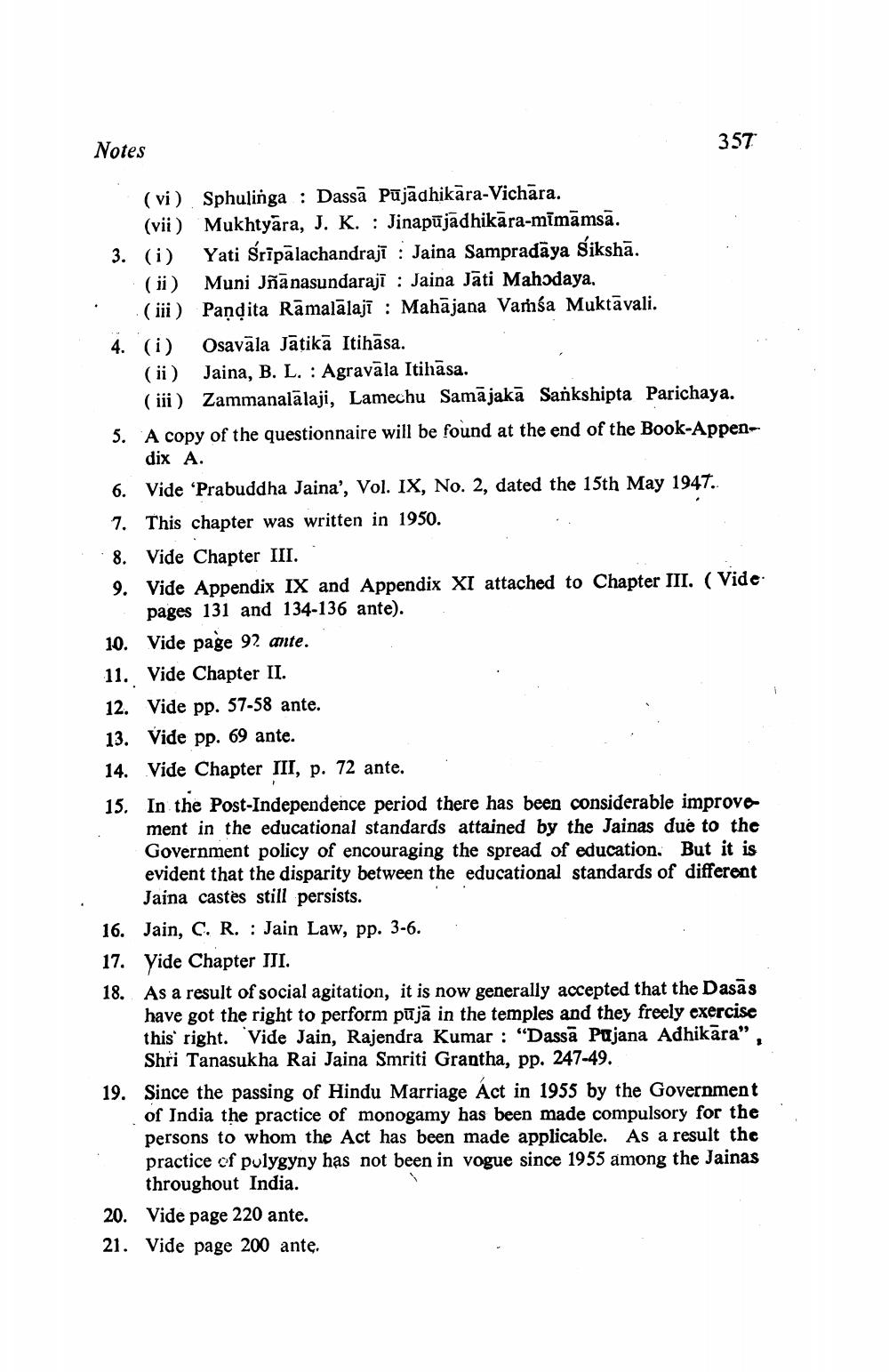________________
Notes
357
(vi) Sphulinga: Dassā Pūjādhikara-Vichara.
(vii) Mukhtyara, J. K. : Jinapūjadhikara-mīmāmsā. 3. (i) Yati śrīpālachandraji : Jaina Sampradāya Sikshā.
(ii) Muni Jñanasundaraji : Jaina Jāti Mahɔdaya, • (iii) Pandita Rāmalālaji : Mahājana Vamsa Muktavali. 4. (i) Osavāla Jātikā Itihāsa.
(ii) Jaina, B. L. : Agravāla Itihāsa.
(iii) Zammanalālaji, Lamechu Samājakā Sankshipta Parichaya. 5. A copy of the questionnaire will be found at the end of the Book-Appen
dix A. 6. Vide 'Prabuddha Jaina', Vol. IX, No. 2, dated the 15th May 1947. 7. This chapter was written in 1950. 8. Vide Chapter III. 9. Vide Appendix IX and Appendix XI attached to Chapter III. (Vide.
pages 131 and 134-136 ante). 10. Vide page 92 ante. 11. Vide Chapter II. 12. Vide pp. 57-58 ante. 13. Vide pp. 69 ante. 14. Vide Chapter III, p. 72 ante. 15. In the Post-Independence period there has been considerable improve
ment in the educational standards attained by the Jainas due to the Government policy of encouraging the spread of education. But it is evident that the disparity between the educational standards of different
Jaina castes still persists. 16. Jain, C. R. : Jain Law, pp. 3-6. 17. Yide Chapter III. 18. As a result of social agitation, it is now generally accepted that the Dasās
have got the right to perform pūjā in the temples and they freely exercise this right. Vide Jain, Rajendra Kumar : "Dassā Pujana Adhikāra",
Shri Tanasukha Rai Jaina Smriti Grantha, pp. 247-49. 19. Since the passing of Hindu Marriage Act in 1955 by the Government
of India the practice of monogamy has been made compulsory for the persons to whom the Act has been made applicable. As a result the practice of pulygyny has not been in vogue since 1955 among the Jainas
throughout India. 20. Vide page 220 ante. 21. Vide page 200 ante.




